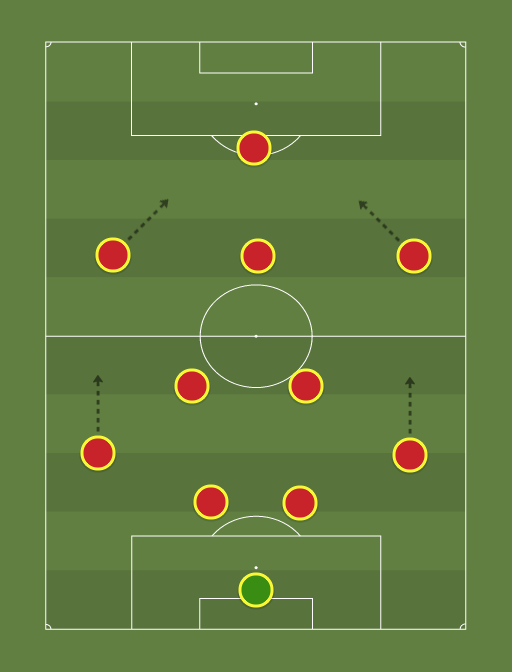4 3 2 1 Formation Numbers

The 4 2 3 1 is most often used in the english premier league.
4 3 2 1 formation numbers. The 4 2 3 1 splits players into four bands. This system has 2 attacking midfielders and one striker. These all have the same value but look different 3 4 6 8 63 84 75 0 75 they are equivalent fractions a separate table of equivalent fractions is available. The midfield of the 4 2 3 1 formation is very flexible.
If both full backs bomb on the formation will no longer be exactly 4 3 2 1 but rather 2 3 4 1 at that particular moment but the team still plays out of the 4 3 2 1 formation. They are there to repel opposition attacks by tackling heading and marking players employing either zonal or man marking tactics. For example the popular 4 5 1 formation has four defenders five midfielders and a single forward. The job of the central defenders is consistent with other formations such as 4 4 2 and 4 5 1.
The 4 defenders can be divided into two fullbacks two center backs. Passing angles and triangles the spread out nature of the formation allows for a number of triangles to develop around. Formations are typically described by three or four numbers which denote how many players are in each row of the formation from the most defensive to the most forward. A whole number followed by a proper fraction.
A mixed number is made up of two parts. Constant advances of the players in the offensive alternating if possible cause problems and confusion for the opposing defense. Equivalent fractions are two or more fractions which have the same value but which are different in form. The tactics column looks at the 4 2 3 1 formation and how it has become almost the standard in modern football because of its balance and flexibility.
A solid spine to the team the two central defenders with the two midfielders in front of them are the backbone of the. Juventus attacking structure against bologna was perfect and allowed them to dominate centrally while remaining threatening on the flanks as can be seen in the video below. Number 10 constitutes a real playmaker and the two wing players are nearly equal to real wing attackers or wingers. Central defenders in the 4 2 3 1 formation.
One of the ways in which they can do that is by covering the full backs as they push forward filling the spaces between the central defenders and midfielders and even performing a man marking job on the opposition s number 10. The 4 3 3 or 4 3 2 1 allows for a dedicated defensive midfielder and his role is pivotal in this formation as it gives attacking freedom to both central midfielders the two full backs and means the two wingers have less defensive responsibility. The formation relies on two defensive minded midfielders providing cover for their defenders and three creative attacking midfielders who can produce chances for each other and the striker who is typically the primary goal scorer in this formation.


















